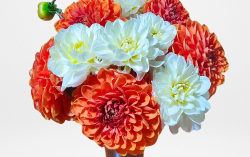 You've seen composite pictures on everything from magazine ads to greeting cars, and you want to try your hand at making your own. You've got a decent idea of what you want your composite masterpiece to look like already, you're just not sure what to start. You want to make this something special.
You've seen composite pictures on everything from magazine ads to greeting cars, and you want to try your hand at making your own. You've got a decent idea of what you want your composite masterpiece to look like already, you're just not sure what to start. You want to make this something special.
What are some things to keep in mind when putting composite photographs together? Are there any universal truths to keep in mind while searching for elements to use for your image? Read on and learn five tips for creating composite pictures!
-
Use Matching Elements
When picking out the elements you want to use for compositing, pick ones that match. Make sure they have the same perspective and have a similar light source. Trying to mash together contrasting elements won't help you put together an amazing image, you'll have a mess.
Keep in mind that when you're picking out your elements, that you have a way to fit them together to make an eye-catching image. Look for images that have areas where you can fit them together in an interesting way. Always keep in mind what you want your image to look like for this reason.
-
Be Careful With Your Selections
Don't just cut out the element you want and slap it into the larger composite image. You want to carefully select the edges of your elements with your editing tools. This is especially important when you need to make the background transparent on an element to make it easier to integrate it with the larger composite.
In the end, how careful you are with your selections may make or break your image. So, when you edit your picture, make selections your top priority. Especially if you are going for that eye-catching composite!
-
Don't Use Contrasting Depth
When fitting your main elements together, don't put them together if their depth is too different. You want them both to pop out when you have your composite pictures finished. Fitting them together if they have different levels of atmospheric depth will make it hard to fit them together.
-
Focus on the Middle
To give your image depth, you always want to have a background layer, a center layer, and a foreground layer. Your focus should always be on the center layer. That is where your subject or action is, with items both in front and behind it to give it depth.
-
Color Is Key
Color is where you can blend everything in your image together into a beautiful whole. Picking a thematically appropriate color map or gradient will bring your picture into focus and cement your image's atmosphere. Whether it is a whimsical feeling or a dramatic scene, this is where your photo editing skills are put to the test!
Create Composite Pictures
Photo editing to create amazing composite pictures is an art that you can use to wow your friends and family. You can make great book covers, greeting cards, or just funny scenes to amuse yourself and others. It's a fun hobby anyone can learn!
Enjoy this article? Then please take a look at our blog for more interesting articles!











